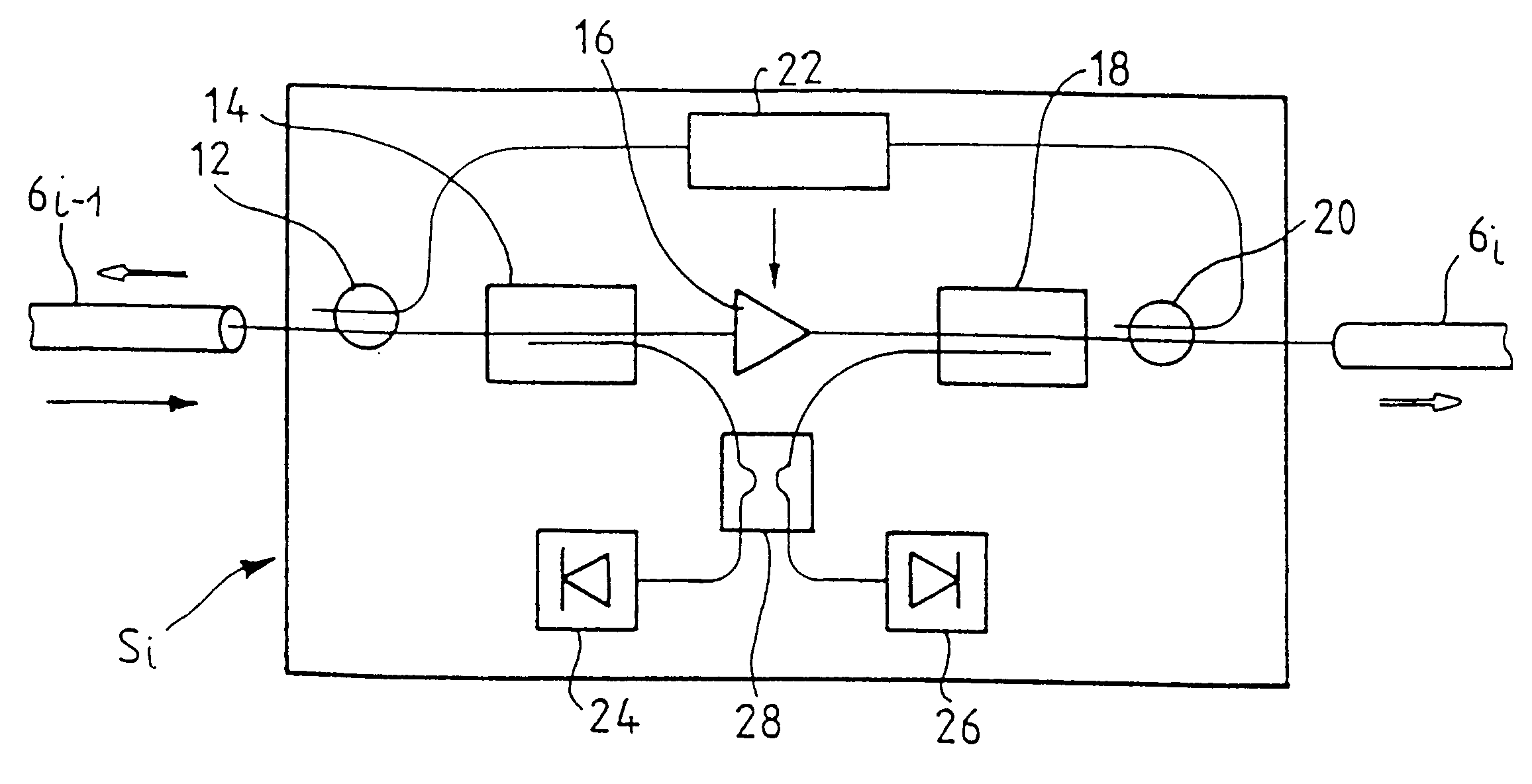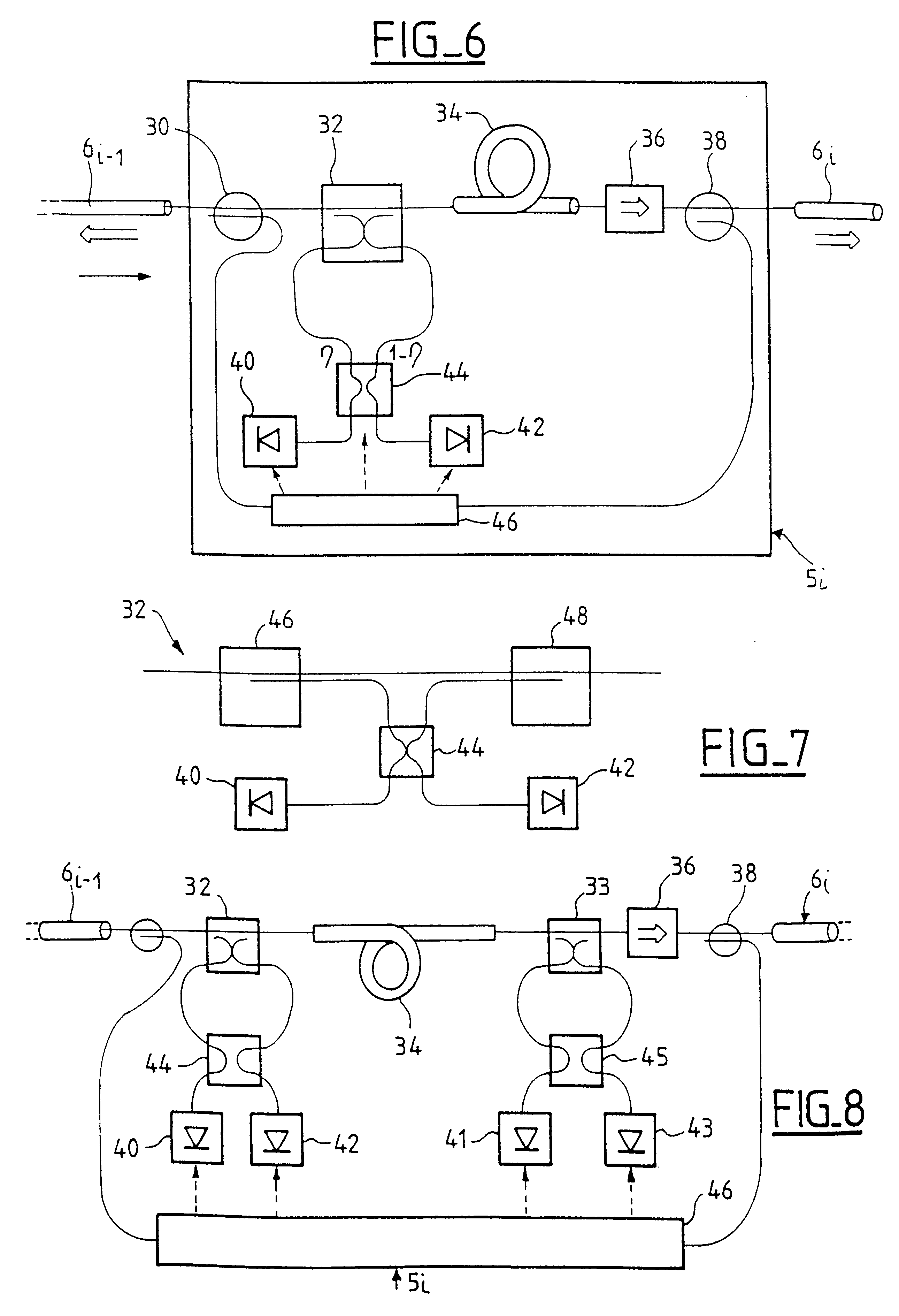Quasi-distributed amplification in a fiber optic soliton signal transmission system
a transmission system and fiber optic soliton technology, applied in the field of quasi-distributed amplification in fiber optic soliton signal transmission systems, can solve the problems of imposing a theoretical limit on the quality or bit rate of soliton transmission, unwanted time-jitter, and limited transmission distance or the distance between amplifiers
- Summary
- Abstract
- Description
- Claims
- Application Information
AI Technical Summary
Benefits of technology
Problems solved by technology
Method used
Image
Examples
Embodiment Construction
The invention applies to a single-channel or wavelength-division multiplex fiber optic soliton signal transmission system. It is described hereinafter with reference to a wavelength-division multiplex system in which the various wavelengths of the multiplex are chosen to provide a relative slip between the various channels substantially equal to a multiple of the bit time over a given interval. However, it is not limited to a transmission system using this kind of frequency allocation scheme and applies more generally to any wavelength-division multiplex soliton signal transmission system.
The wavelength allocation solutions described in the articles by E. Desurvire and O. Leclerc mentioned above can be used in the example given here. The wavelength allocation schemes of both articles are hereby incorporated in the present specification by reference. This kind of wavelength allocation scheme provides relative slip between the various channels substantially equal to a multiple of the ...
PUM
| Property | Measurement | Unit |
|---|---|---|
| transmission distances | aaaaa | aaaaa |
| powers | aaaaa | aaaaa |
| wavelengths | aaaaa | aaaaa |
Abstract
Description
Claims
Application Information
 Login to View More
Login to View More - R&D
- Intellectual Property
- Life Sciences
- Materials
- Tech Scout
- Unparalleled Data Quality
- Higher Quality Content
- 60% Fewer Hallucinations
Browse by: Latest US Patents, China's latest patents, Technical Efficacy Thesaurus, Application Domain, Technology Topic, Popular Technical Reports.
© 2025 PatSnap. All rights reserved.Legal|Privacy policy|Modern Slavery Act Transparency Statement|Sitemap|About US| Contact US: help@patsnap.com



